
Moto Aventure:
Une définition et un guide.
Mars 2020
Auteur/photographe: Seamus Willox
Vous êtes curieux de connaître cette mode des motos d'aventure ? Ou vous envisagez de vous lancer dans la conduite d'aventure ? Vous ne savez pas par où commencer ? Ne cherchez plus! Nous sommes là pour vous aider à comprendre de quoi il s'agit et à prendre une longueur d'avance sur le genre de moto le plus populaire..
Tout d'abord, qu'est-ce que la conduite d'aventure ? La conduite d'aventure peut être très différente... la conduite d'aventure EST beaucoup de choses différentes. C'est la conduite dans la rue, la conduite sur terre, le tourisme, les virages et l'exploration. La conduite d'aventure peut être aussi facile ou aussi difficile que vous le souhaitez. Les motards d'aventure verront des choses que la plupart ne verront pas, iront dans des endroits que la plupart ne verront pas, et apprendront de nouvelles techniques en cours de route. Les motos d'aventure sont les touche-à-tout, elles font à peu près tout ce que vous pouvez faire sur une moto, et le font bien. Il y a une raison pour laquelle le segment des motos d'aventure de cette industrie est celui qui connaît la croissance la plus rapide.
Une définition rapide ou deux avant de commencer:
Aventure: Le dictionnaire le définit comme: se livrer à des activités dangereuses et passionnantes, notamment l'exploration de territoires inconnus. Je crois que toutes les BONNES histoires naissent de bonnes aventures, et qu'une bonne aventure ne vient jamais d'un plan bien élaboré..
Farklé: Accessoire fantaisie vraiment cool, probablement cher. Le mot proviendrait de la ST1100 et est commun parmi les pilotes de tourisme aventure et de tourisme sportif. Nous veillerons à ce que votre nouvelle moto soit entièrement décorée!
Coordonnées: (en ce qui concerne l'armure) Un point de contact est un endroit courant où votre corps peut entrer en contact avec le sol en cas d'accident ou de chute. Articulations principales, paumes des mains, coudes, genoux, hanches, épaules, chevilles, phalanges, etc..
À l'arrêt-Route:Par Off-Route Je veux dire des sentiers, des lignes électriques, des lignes coupées, des pistes simples ou des sentiers de chèvres, un endroit où une voiture n'ira pas.
1: Croiseur d'aventure décontracté

Le motard occasionnel s'en tiendra principalement à la conduite sur route, mais aimerait pouvoir s'aventurer sur des chemins de gravier, et peut-être sur la route principale de temps en temps. Il peut avoir des compagnons de route qui restent sur le trottoir avec lesquels il aimerait rouler, tout en étant à l'aise sur le trottoir pour des excursions d'une journée. Le sens de l'aventure est là, mais les décisions responsables sont également présentes. Ce motard est un motard de rue qui apprécie la possibilité d'aller plus loin.
80-85% Routes pavées
15-20% chemins de gravier
0-5% hors route (généralement du gravier à la pêche/camping/lieu de déjeuner)
Notre top 5 sélections de vélos pour le cycliste occasionnel.
- Honda NC750X
- KTM 390 Aventure
- Suzuki V-Tempête 650 or V-Tempête 1000
- Honda CB500X
- KTM 790 Aventure S
Recommandé Farkles:
- Sacoche de réservoir (pour l'eau, les collations, l'appareil photo, la jauge de pneu, etc..)
- Top case arrière (endroit pour mettre un casque, du matériel supplémentaire, un déjeuner, etc..)
- Main de base-gardes (garder les mains au chaud, pour se protéger des rochers, etc..)
- 60/40 On/Hors pneu (quelque chose d'encore excellent sur la route, mais capable sur le gravier)
- Shinko 705, Heidenau K60, Mitas E07, TKC70, ou parfois en stock.
2: Voyageur longue distance

Le voyageur d'aventure longue distance planifiera un long voyage, 3 semaines sur la moto, principalement sur autoroute, mais veut s'aventurer hors des routes à certains endroits pour se rendre dans des endroits agréables et hors des sentiers battus pour un superbe point de vue, ou pour voir certaines choses que la plupart ne verront pas. Ils passeront la plupart du temps sur les routes entre les arrêts. Cela peut être un voyage unique d'une vie ou une expédition annuelle. Il voyage assez souvent avec d'autres catégories de motos comme les Goldwings, les grands cruisers, les motos de tourisme sportif ou d'autres motos d'aventure penchées sur la route.
85-90% Routes pavées (beaucoup d'autoroutes à deux voies)
10-15% Routes de gravier très fréquentées
0-5% désactivé-route (généralement du gravier à la pêche/camping/lieu de déjeuner)
Notre top 5 choix de vélos pour les longues distances:
- Suzuki V-Tempête (généralement 1000 ou le nouveau V-Tempête 1050 pour autoroute)
- Honda Africa Twin Aventure Sport
- Honda Africa Twin
- KTM 1290 S (réservé aux cyclistes expérimentés, ce vélo est une bête :) )
- KTM 1290 R (voir au dessus)
Recommandé Farkles:
- Sacoches latérales et top case (généralement en aluminium dur pour garder les choses au sec, sert également de siège et de table)
- Pare-brise haut (moins de fatigue avec moins de vent)
- Poignées chauffantes + Main-gardes (vous pourriez vous retrouver à rouler la nuit, des mains chaudes en valent la peine)
- Sacoche de réservoir (pour vos affaires quotidiennes, faciles à atteindre tout en restant (arrêté) sur le velo)
- Protections moteur (pour tenir les lumières supplémentaires)
- Lumières LED supplémentaires (la lumière supplémentaire est toujours la bienvenue sur une route déserte)
- 12v/Prise USB (pour charger le téléphone, le GPS, booster la batterie, etc..)
- 60/40 On/Hors pneu (Mitas E07 et K60 Les scouts parcourent beaucoup de kilomètres et sont confiants sur le gravier)
- Trousse à outils (mieux vaut l'avoir et ne pas en avoir besoin que d'en avoir besoin et ne pas l'avoir)
- GPS et support. (ça sera utile, tu le sais!)
3: Cavalier d'aventure de la ville natale

Ce cavalier reste généralement plus près de chez lui en raison du travail ou de la famille, fait principalement des excursions d'une journée, peut-être occasionnellement des excursions d'une nuit.-quelque part. S'aventure fréquemment sur des chemins de gravier, aime voir où mènent toutes les impasses. Je vais l'enlever-route s'ils pensent qu'il y a quelque chose à voir, peut-être un lieu de pêche ou un bon endroit pour prendre quelques photos.
60-70% Chaussée
30-40% Gravier (principalement des routes secondaires et parfois des routes de pompiers)
5-15% À l'arrêt-Route (de courtes sections, jusqu'à la rivière, ou un raccourci quelque part)
Notre top 5 choix de vélo:
- KTM 790S or R
- Honda Africa Twin
- Suzuki V-Tempête (Le choix des pneus est la clé de l'endroit où vous voulez aller)
- CB500X (nouveau choix de pneus, 2019 et plus récent a 19" roue avant)
- KTM 1290 (soyez prudent avec celui-ci)
Recommandé Farkles:
- 50/50 pneu (quelque chose de convenable sur le gravier et de convenable dans la rue)
- Shinko 804/805, Continental TKC 80, Motoz Tractionator Adventure, Mitas E07+ or E10, Michelin Anakee Wild, Metzeler – Karoo 3, there's a huge selection in this segment)
- Barre de sécurité (pour la protection et les lumières)
- Lumières LED supplémentaires (parce que tu ne sais jamais)
- Sacoche de réservoir (collations, appareil photo, leurres, etc..)
- Plaque de protection (il y a des rochers près de la rivière, les plaques de protection sont moins chères que les carters de moteur)
- 12v/Prise USB (recharger téléphone, appareil photo, GPS etc.)
- Protège-mains (évitez les rochers et restez au chaud sur le chemin du retour)
4: L'explorateur

C'est la raison d'être des motos d'aventure. L'Explorer va faire un excellent usage de la vraie moto d'aventure. Ils emmèneront leur moto d'aventure presque partout. Ils passeront beaucoup de temps sur les chemins coupe-feu, les routes nationales et partout où les gens ne sont généralement pas. Ils feront parfois de longs voyages, parfois de simples excursions d'une journée, dans tous les cas, ils partiront à l'aventure! Leur vélo aura probablement quelques égratignures et ils les traiteront comme des cicatrices de bataille.-La route n'est pas une inconnue, mais ce n'est pas toujours le but. Des sorties de pêche dans des endroits reculés, des sentiers de VTT « je me demande où ça mène », quelques collines, mais pas trop de choses folles. En général, on ne roule que sur le trottoir pour atteindre le gravier, ou si on roule avec des motos de route complètes.
30-40% Chaussée
60-70% Gravier
10-20% À l'arrêt-Route (des sentiers de VTT plus propres, des lignes électriques, des choses plus faciles)
Notre top 5 choix de vélos pour l'Explorer:
- Honda Africa Twin
- Honda Africa Twin Aventure Sport
- KTM 790R
- KTM 1290R
- Suzuki V-Tempête (fais attention-route, vas-y doucement dans les choses plus difficiles)
Recommandé Farkles:
- 50/50 on/hors pneus
- Shinko 804/805, Continental TKC 80, Motoz Tractionator Adventure, Mitas E07+ or E10, Michelin Anakee Wild, Metzeler – Karoo 3, there's a huge selection in this segment)
- Plaque de protection (parce que "je me demande où ça va"")
- Barres de sécurité (lumières et voir ci-dessus)
- Lumières LED supplémentaires (pour revenir après "Je me demande où ça va")
- Protège-mains enveloppants en aluminium (revenir en arrière sans frein avant ni levier d'embrayage n'est pas amusant)
- 12compresseur v + kit de réparation de pneus (soit des bouchons pour tubeless, soit des rustines pour chambres à air et la connaissance de leur utilisation)
- Outils supplémentaires (les kits d'outils d'usine ne sont généralement pas géniaux)
- GPS et support (pour retrouver votre chemin aller et retour, vous permet également de suivre vos journées pour référence ultérieure/preuve)
- Sacoche de réservoir (collations, Gatorade, appareil photo)
- Sacs SOUPLE pour les longs trajets (désactivé-Les sacoches souples sont beaucoup plus sûres pour vos jambes que les sacoches rigides)
5: crétin d'aventure

Adventure is sometimes described and taking inappropriate equipment to out of the way places; or a good adventure never comes from a well executed plan, if there's even a plan. This rider will put full knobby tires on and use them 100%! They'll use their bike to take them to places bikes don't really belong. You say “You can't take that bike there”, and they hear a challenge. They'll only be on the pavement to get to the next adventure, or if they're riding with street bikes (they'll constantly be looking for an escape route to gravel or off-road). Gravel roads are just a means of getting to "the good stuff", which will be power lines (nice smooth and fast), ATV trails (I guess there's a little challenge getting around the ruts), and even Dirt bike trails (because why not). They may find themselves in places that'll be hard to get out, or over, or through, but that's part of the adventure. Their bike WILL have battle scars, broken pieces, and dents, this doesn't bother them "I bought this bike to use it, not baby it!"
10-20% Chaussée (parce que je ne vis pas là où se trouvent les bonnes choses)
60-80% Routes de gravier (Les routes d'incendie, les routes nationales et les routes secondaires sont amusantes à grande vitesse)
20-40% À l'arrêt-Route (ce n'est pas toujours des trucs fous, mais ça se passe souvent comme ça)
Notre top 5 choix de vélos pour le Goon:
- KTM 790R
- KTM 1290R
- Honda Africa Twin
- Honda Africa Twin Aventure Sport
- KTM 790S (assurez-vous d'avoir une plaque de protection lourde)
Recommandé Farkles:
- Toute l'armure, tout.
- Plaque de protection, lourde, tu vas l'utiliser.
- Barres de protection, barres supérieures si disponibles également.
- Couvercles de carter de moteur (une pierre pointue peut percer assez facilement, laissant tomber toute votre huile)
- Main enveloppante en aluminium-gardes (les leviers sont agréables à avoir et préservent vos articulations)
- Couverture de phare/gardien (si vous roulez avec d'autres fous partageant les mêmes idées, cela vous protégera des pierres lancées par votre ami)
- Garde de réservoir de frein (le réservoir arrière est souvent exposé derrière la cheville droite, les freins sont parfois utiles)
- Pneus à crampons 80/20 ou mieux (Mitas E09 arrière/C21 avant, ou tout ce qui se rapproche du dirt bike qui correspond au POIDS et au DOT)
- Lumières LED supplémentaires (des choses arrivent, des retours à la maison tard dans la nuit se produisent également, pouvoir voir est plutôt sympa aussi)
- Pare-brise COURT (il y a une chance que vous passiez par-dessus les barres à un moment donné, il n'est pas recommandé de manger un grand pare-brise de tourisme en chemin)
- GPS + support robuste (vous voudrez le ranger en cas d'accident, "ça a l'air d'être un sentier sympa" vous fait parfois faire demi-tour dans les bois)
- Miroirs pliants (quand le vélo tombe, tu peux garder tes rétroviseurs)
- Piquets plus larges, plus adhérents et plus solides (vous passerez beaucoup de temps debout dans la boue)
- 12v/Prise USB (pour charger des choses)
- Des outils supplémentaires, y compris du fil et du ruban adhésif, oh et quelques pièces de monnaie et de la soudure JB, ne demandez pas, apportez-les simplement.
- Kit de réparation de pneus comprenant 12compresseur v (bouchons pour tubeless, rustines pour chambres à air et savoir les utiliser)
- Envisagez des améliorations de suspension en fonction du vélo. (la suspension est toujours la meilleure mise à niveau! Une meilleure suspension vous permettra de rester sur la bonne voie, de moins vous cabrer, de mieux suivre la piste, de moins toucher le fond, et d'aller plus vite et en toute sécurité. AU MOINS, réglez votre suspension d'origine pour vous et votre conduite!)
L'équipement:
Maintenant, parlons de l'équipement que vous devriez porter. Je ne vais pas entrer dans les détails de l'équipement, je vais juste vous donner un aperçu de ce à quoi vous devez vous attendre. L'équipement est un choix très personnel, les casques s'adaptent à différentes personnes, les vestes sont différentes pour différentes personnes, et tout dépend de la façon dont vous prévoyez de rouler. Donc, c'est un guide. Vous devriez avoir une bonne idée de ce à quoi vous devez faire attention..
Casques:
Il existe une multitude de casques de qualité parmi lesquels choisir, nous allons donc essayer de vous les proposer. Pour la conduite aventure, il existe 3 types que nous recommanderons, en fonction du type de conduite que vous ferez. Le premier type et le plus courant est... avant d'aborder les casques eux-mêmes, une note rapide sur les normes de sécurité.
Normes de sécurité du casque:
Comme vous le savez peut-être ou non, il existe quelques normes de sécurité différentes pour les casques. Je vais vous donner un aperçu de base des trois principales, de ce qu'elles sont et de leurs différences. Gardez à l'esprit que ces normes de sécurité ne fonctionneront pas si le casque que vous portez n'est pas bien ajusté. N'oubliez pas de toujours faire ajuster votre casque correctement..
D.O.T. (Document officiel ici)
Cette norme (FMVSS 218) par le département américain des transports est ce que les lois canadiennes exigent que les casques respectent. (Remarque: l'autocollant DOIT rester sur le casque)
E.C.E. (Document officiel ici)
(Commission économique pour l'Europe)
La loi canadienne n'exige pas l'ECE pour la conduite sur route, mais la certification est plus stricte à certains égards.
Snell (Document officiel ici)
La fondation Snell est une fondation indépendante basée aux États-Unis qui existe depuis 1957. Snell M2020 les normes sont les plus récentes et sont conformes aux normes DOT et ECE. Snell M2015 est la norme précédente de cette fondation
OK, passons maintenant aux trois principaux styles recommandés pour la conduite aventureuse.
Casques intégraux:
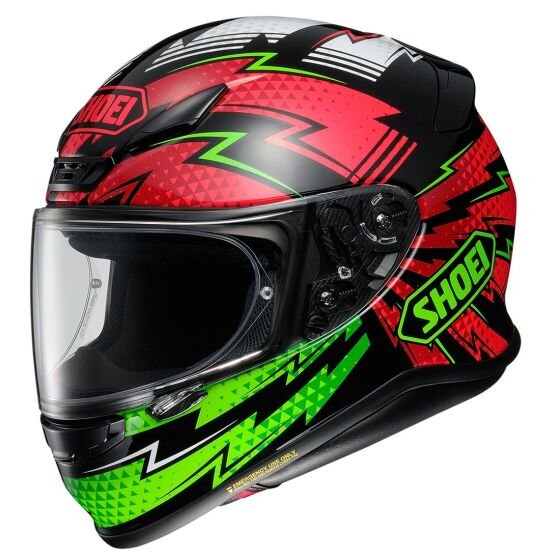
Les casques intégraux sont de loin le type de casque de vélo de route le plus courant, ils offrent la meilleure protection, une tonne de fonctionnalités et de nombreux styles parmi lesquels choisir. Lorsque vous recherchez des casques intégraux, il est judicieux de déterminer votre budget au préalable, car un casque décent peut aller d'un casque de moto à un casque de moto. $200 jusqu'à un $1000 (ou plus). (indice: tu n'as pas besoin de dépenser $1000 pour obtenir un bon casque) En règle générale, plus vous dépensez pour un casque, meilleurs seront les matériaux, plus vous pourrez obtenir de fonctionnalités, une meilleure ventilation, des visières de meilleure qualité, un poids plus faible et des styles plus cool..
Casques d'aventure:
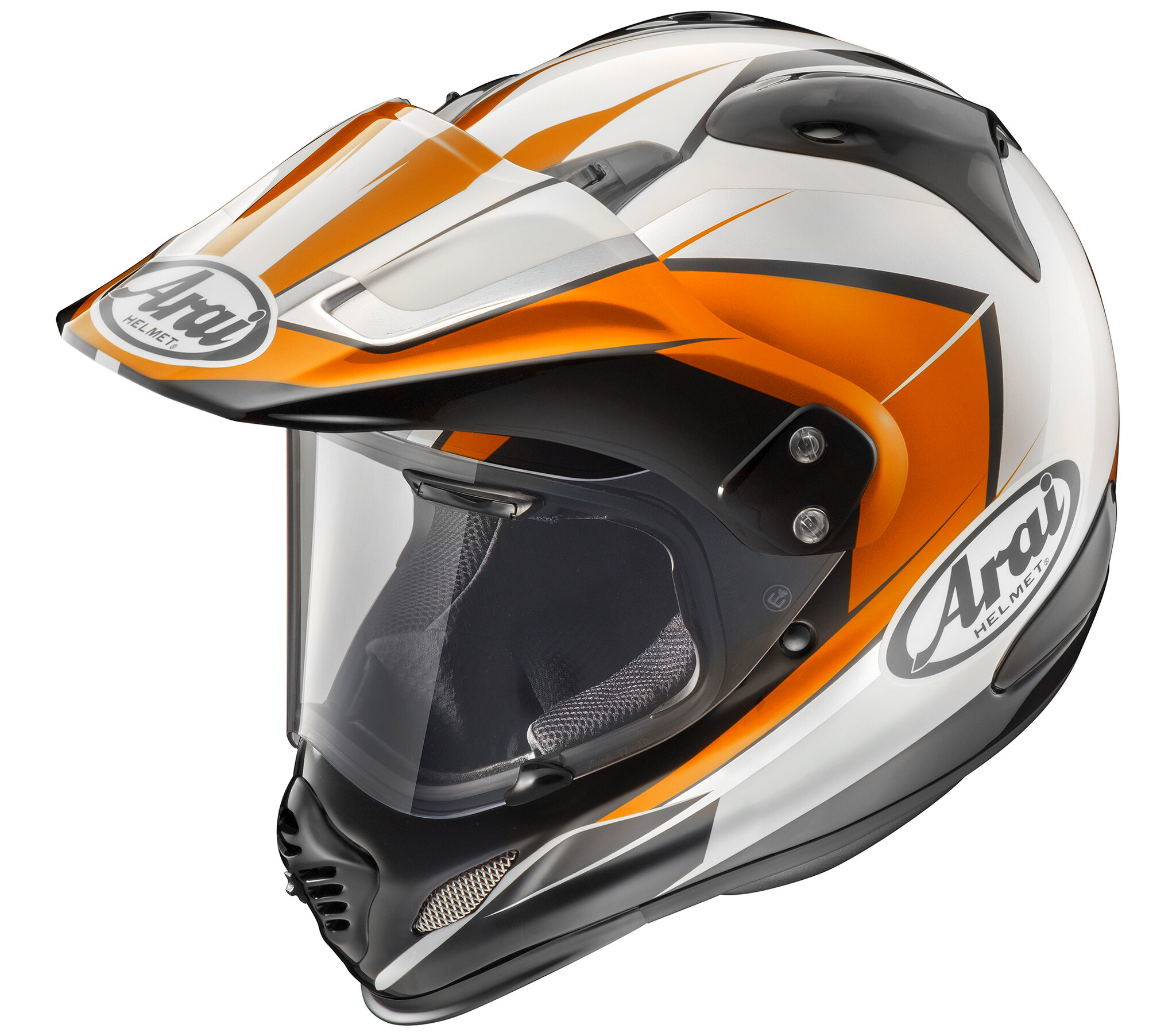
Les casques d'aventure ressemblent beaucoup aux casques intégraux, mais avec une visière supplémentaire au sommet comme un casque de motocross. Cette visière est pratique pour bloquer le soleil, en particulier sur une route bordée d'arbres où vous êtes constamment dans et hors de l'ombre. Ces visières sont conçues pour laisser passer le vent à grande vitesse, contrairement à votre casque tout-terrain classique.-casque de route, donc ils ne seront pas trop tirés vers l'arrière à cause du vent. Pour la plupart des casques d'aventure, ils ont également la possibilité de retirer la visière si vous faites beaucoup de route sur autoroute.
Casques modulaires:
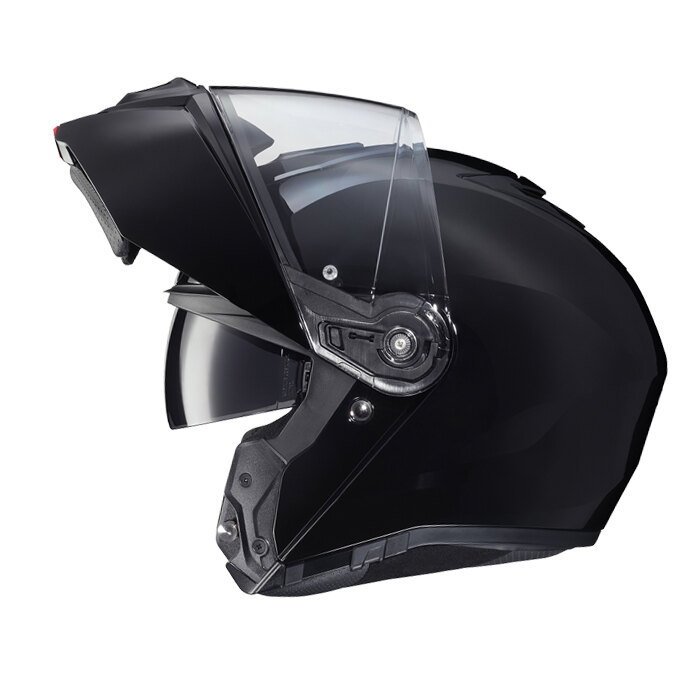
Les casques modulaires ressemblent aux casques intégraux et, dans certains cas, aux casques d'aventure, mais avec une caractéristique majeure; le menton se relève avec la visière exposant votre beau visage (c'est un fait peu connu que ces casques dans cette position ne sont pas flatteurs, hein Richard ? mais ne vous inquiétez pas pour ça). Cette fonction vous permet de le relever, à l'arrêt ou à basse vitesse, pour discuter avec vos compagnons de route, boire un verre d'eau ou simplement prendre l'air. Les personnes portant des lunettes ont tendance à se tourner vers ces casques car ils sont plus faciles à manipuler avec des lunettes. Notez cependant que la partie modulaire du casque ne fait pas partie de la protection contre les collisions, elle ne protège que du vent, des petits débris, du soleil et des insectes. Les casques modulaires ont tendance à être un peu plus lourds en raison du mécanisme de basculement et ont tendance à ne pas être aussi silencieux que les casques intégraux en raison de la couture du basculement. Cela étant dit, les casques modulaires sont TRÈS populaires et très polyvalents. Vous n'en trouverez pas beaucoup sous $200 pour casques modulaires (vous pouvez trouver une vente si) ils commencent juste au dessus $200 PDSF.
Avec tous les choix disponibles, la meilleure chose à faire est de venir chez le concessionnaire et d'en essayer tout un tas pour voir ce qui vous convient le mieux..
Noter: Les casques brillants attirent davantage l'attention des cagers (Cage: Les automobilistes qui sont visiblement jaloux de vous sur votre moto, et qui peuvent donc être distraits en cherchant sur Google le concessionnaire de motos le plus proche)
Vestes d'équitation:
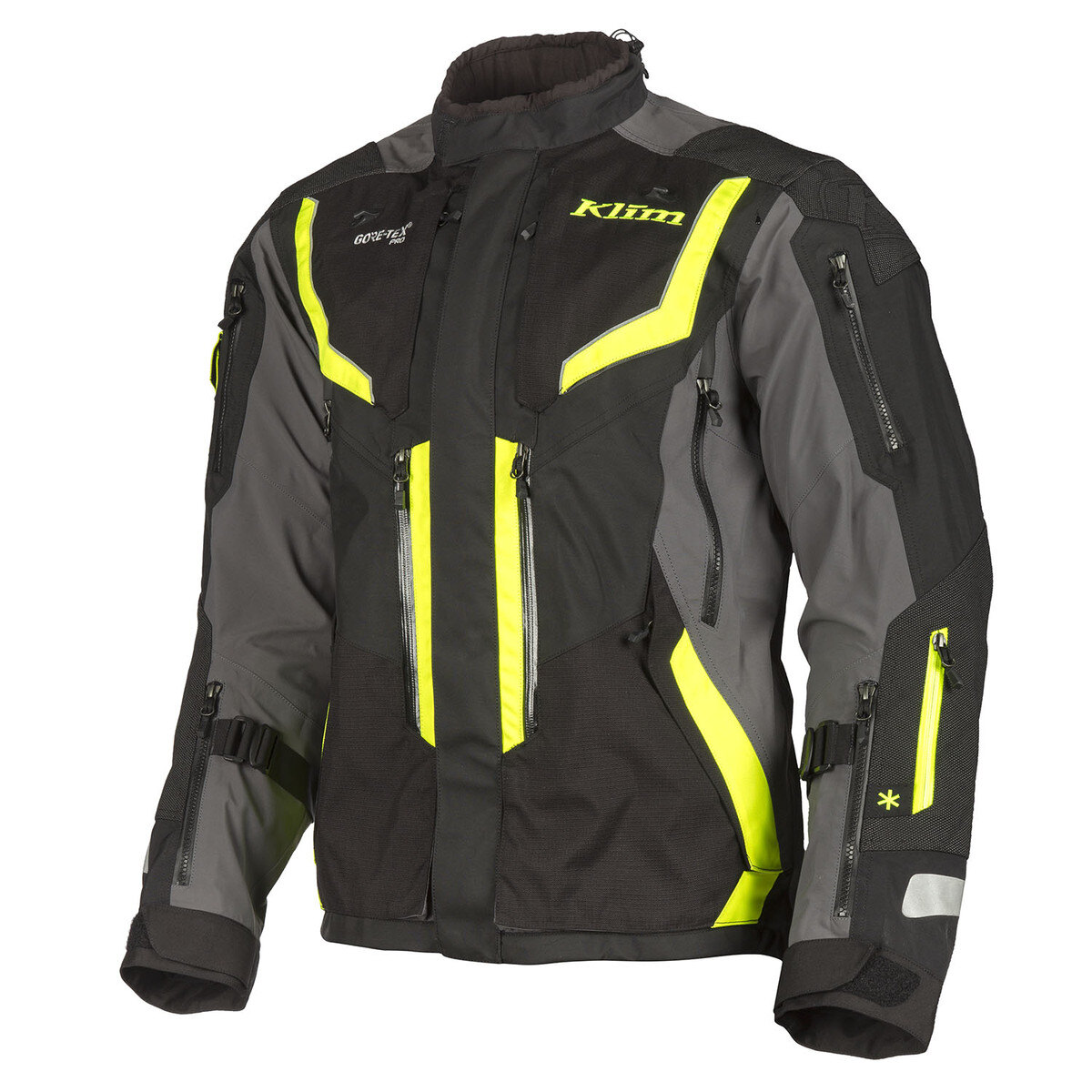
Avec toutes les marques haut de gamme disponibles, il peut être difficile de choisir une veste. Tout d'abord, je recommanderais une veste en textile plutôt qu'une veste en cuir pour ce type de conduite. Une BONNE veste en cuir peut offrir une protection fantastique en cas de chute, mais elles ont tendance à être lourdes, rigides et peu ventilées. Le cuir fonctionne très bien sur les motos de course en raison de la vitesse, et sur les cruisers de tourisme car vous ne changez pas vraiment de position et elles complètent le look ;) .
Vestes textilesLes vestes de randonnée sont disponibles dans une grande variété de formes, de tailles, de couleurs et de caractéristiques. Recherchez une veste Adventure ou éventuellement une veste de randonnée, elles seront conçues pour un pilote en position verticale, très détendue et naturelle. Les vestes de randonnée ont tendance à être un peu plus longues et à avoir plus de poches. Les vestes Adventure peuvent avoir des caractéristiques telles que des manches amovibles (pas toujours une bonne chose), poches d'hydratation intégrées (un excellent moyen de transporter de l'eau, mais peut tirer la veste vers l'arrière lorsqu'elle est pleine), une grande quantité de ventilation, des doublures supplémentaires, une armure interne et les modèles haut de gamme peuvent être entièrement imperméables. Une bonne veste peut commencer par $300 gamme et au sommet $1300, mais il y a beaucoup de choix entre.
Gardez à l'esprit où et comment vous voulez rouler. Pour quelqu'un qui passe principalement de courts trajets sur le bitume, vous n'aurez probablement pas besoin d'une veste vraiment haut de gamme. Vous roulerez à grande vitesse pour vous rafraîchir, vous rentrerez chez vous à la fin de la journée pour vous sécher, vous serez près d'un point d'arrêt pour boire, vous pourrez donc vous en sortir sans sac d'hydratation, ventilation excessive, gore-tex, ou les poches et doublures supplémentaires. Si vous faites de longs voyages, ces caractéristiques peuvent s'avérer très utiles et rendre votre voyage beaucoup plus confortable. Pour le cycliste qui passe du temps libre-route, le sac d'hydratation sera utile, les aérations supplémentaires seront une aubaine, l'imperméabilité vous gardera plus à l'aise et l'armure peut être utile.
Quelle que soit la veste que vous choisissez, assurez-vous qu'elle soit bien ajustée, qu'elle soit bien ajustée avec un sweat à capuche ou un sweat-shirt en dessous, mais qu'elle ne dépasse pas de votre taille. Le pull est une couche supplémentaire s'il fait froid, et s'il est trop grand, le vent sur l'autoroute fera gonfler la veste.
En ce qui concerne les couleurs, je recommande vivement quelque chose de vif, quelque chose qui ressort pour que les gens puissent vous voir plus facilement. N'oubliez pas que vous êtes sur une moto.
Gants:
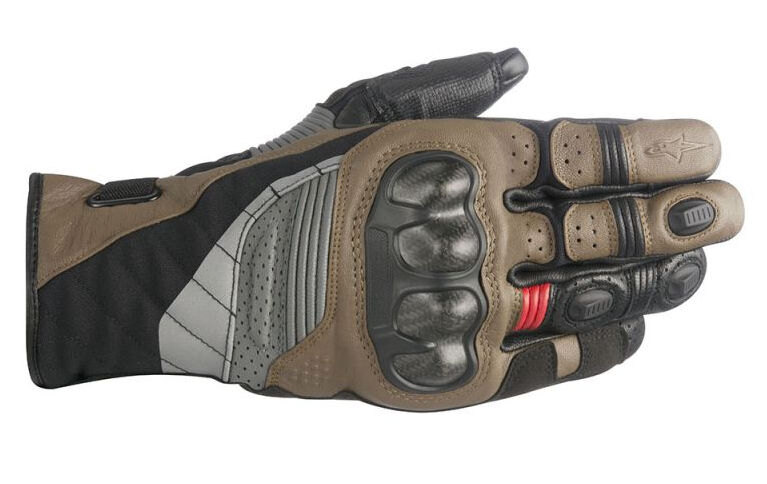
Encore une fois, il y a beaucoup de choix. Pour les gants, je recommanderais deux paires, une paire plus courte et plus légère pour la plupart des sorties, et une paire de gants plus chauds, éventuellement imperméables. Recherchez quelque chose avec des articulations dures et une-base renforcée ou rembourrée de votre paume, ce sont des points de contact si vous tombez. Les gants doivent être bien ajustés mais confortables, comme la plupart des équipements d'équitation. Le cuir n'est pas toujours une mauvaise idée avec les gants, bien que les gants d'équitation en textile soient également bons. N'ayez pas peur de dépenser un peu d'argent ici, une paire bon marché $20 Les gants sont généralement bon marché. Vous n'avez pas besoin de dépenser $300 sur une paire, vous pouvez, mais ce n'est pas nécessaire. Pour vous-pour les motards sur route, il existe aussi des gants de motocross avec des articulations dures.
Bottes:
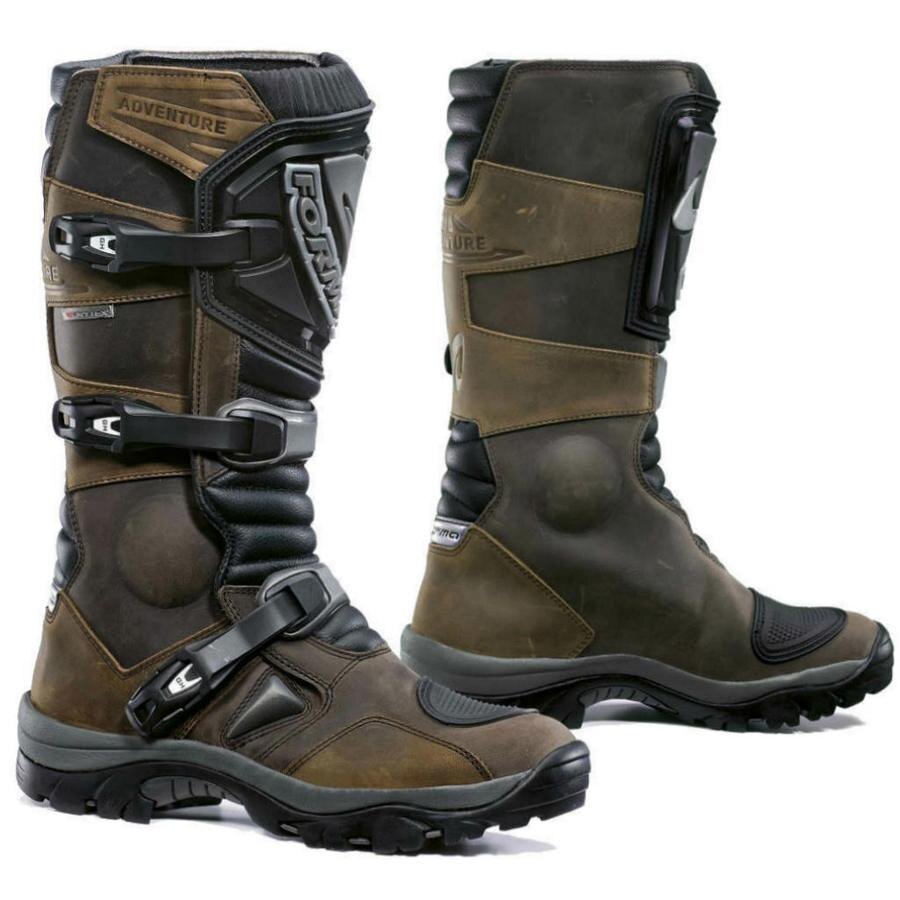
Ok, bottes d'équitation, nous avons presque fini. Vos bottes d'équitation typiques sont généralement des bottes de randonnée, qui fonctionnent tant qu'elles couvrent les chevilles (un autre point de contact) pour une conduite décontractée. Une véritable botte d'équitation offre beaucoup plus de protection et une semelle plus rigide (plus facile pour passer). Le type de bottes que vous choisirez dépendra encore une fois du type de conduite que vous ferez. Pour le motard aventurier occasionnel qui veut quelque chose de plus qu'une simple chaussure de randonnée, je chercherais quelque chose qui monte juste au-dessus de la cheville et qui soit également confortable à porter en dehors de la moto. Les motards de longue distance aimeront peut-être quelque chose avec un peu plus de protection, donc un peu plus haut, avec peut-être un peu d'imperméabilité. Pour ceux qui aiment s'aventurer davantage sur le gravier, une botte haute de style motocross, mais un peu plus souple pour descendre de la moto, qui est votre botte d'aventure. Passons maintenant à la partie hors route.-types de route, vous savez tous combien il est facile de se prendre un pied dans des endroits où il ne devrait pas être, donc je dirais d'opter pour des bottes de moto tout-terrain enduro complètes, dures et rigides... avec beaucoup de protection... ok, ce n'est peut-être pas la meilleure façon de le dire, mais vous l'avez compris. Quel que soit votre choix, ne soyez pas le gars qui porte des baskets.
Un pantalon:
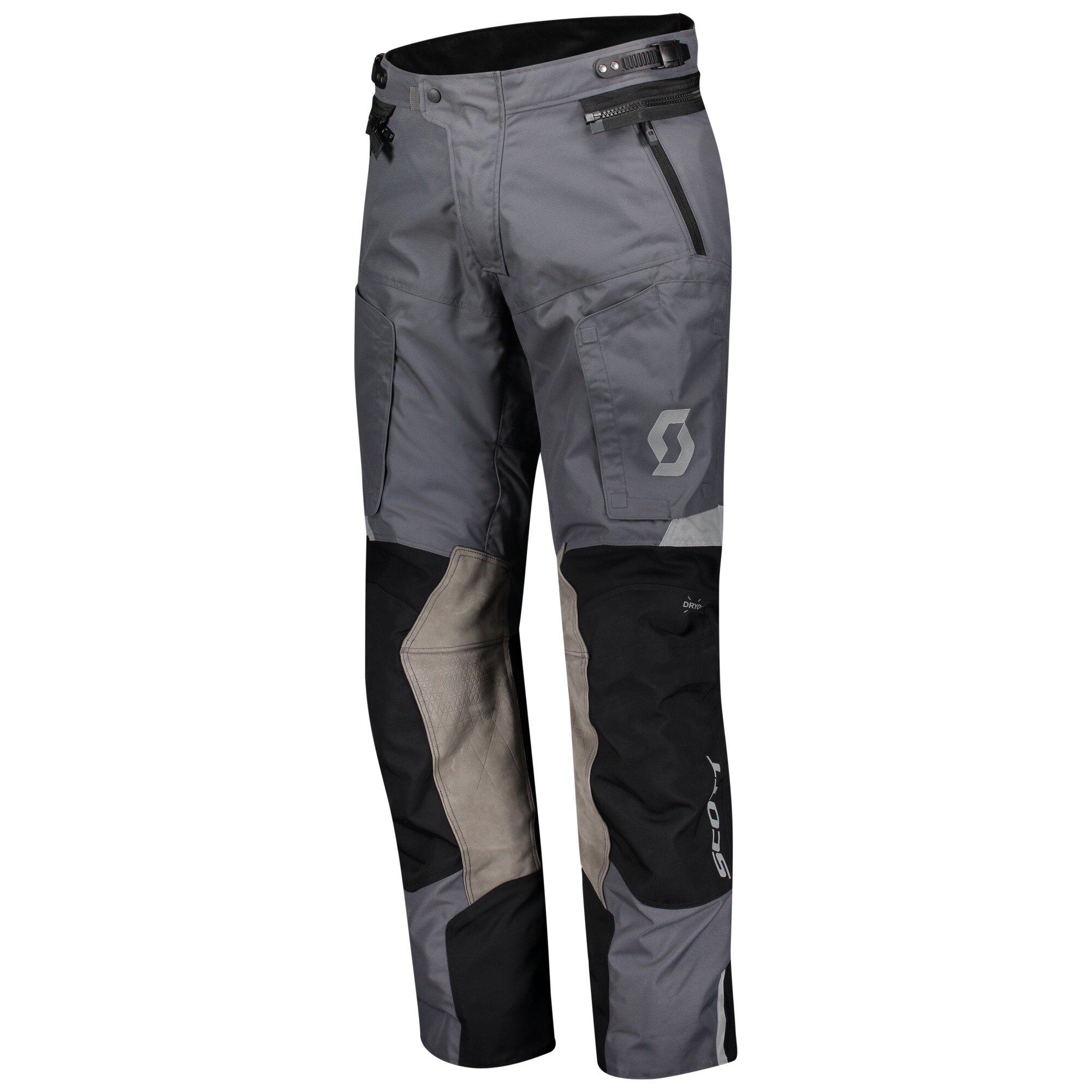
Les pantalons d'équitation ne sont pas quelque chose que tout le monde porte tout le temps, mais la plupart en ont pour certaines sorties. Les pantalons d'équitation sont une bonne chose à avoir sous la main pour plusieurs raisons. La première et la plus importante est la protection, un bon pantalon d'équitation en textile sera beaucoup plus résistant à l'abrasion qu'un jean ordinaire et il aura des empiècements de protection aux genoux et aux hanches (les deux principaux points de contact) pour aider à absorber tout impact qui pourrait se produire. Deuxièmement, un bon pantalon de moto sera quelque peu résistant à l'eau, voire imperméable, donc rouler sous la pluie ou patauger dans les flaques d'eau n'est pas un si gros problème. Troisièmement, le confort, la plupart des pantalons de moto ont des aérations pour laisser passer l'air à grande vitesse, vous gardant au frais. Cela vous permet de porter des shorts par temps chaud, recouverts d'un pantalon de moto, et lorsque vous vous arrêtez, vous enlevez simplement le pantalon, vous êtes maintenant en short! Alternativement, par temps froid, ils couperont mieux le vent que les jeans et seront plus chauds, vous permettant également de superposer les couches..
Comme vous pouvez le constater, les pantalons d'équitation sont une excellente idée pour les journées comme celles-ci, chaudes ou froides..
Une autre option est le jean de moto. Les vrais jeans de moto sont fabriqués en denim épais et ont du Kevlar couvrant l'arrière, les côtés et les genoux sous le denim, certains offrent des coussinets de protection amovibles pour les genoux et les hanches. Les jeans de moto n'ont généralement pas d'aérations et ne sont pas imperméables.
Armure:
Pour toi-Pilotes de motos d'aventure sur route, l'armure est un élément à prendre en compte. La plupart des armures seront des équipements de motocross ou d'enduro pour vous protéger en cas de chute sur des surfaces irrégulières comme des bâtons, des rochers, des bûches, etc..
Il existe un nombre incroyable de choix en matière d'armure! Je vais passer en revue les plus courantes, mais la meilleure chose à faire est de venir chez le concessionnaire et de voir par vous-même..
Donc pour le gars qui sort tout droit-Pour la route avec ces vélos, je vous conseille de vous équiper comme un motard tout-terrain. Les protections de poitrine et de perchoir sont idéales sur la piste, mais pour les arbres, je recommanderai quelque chose d'un peu plus robuste.
Armure du haut du corps.
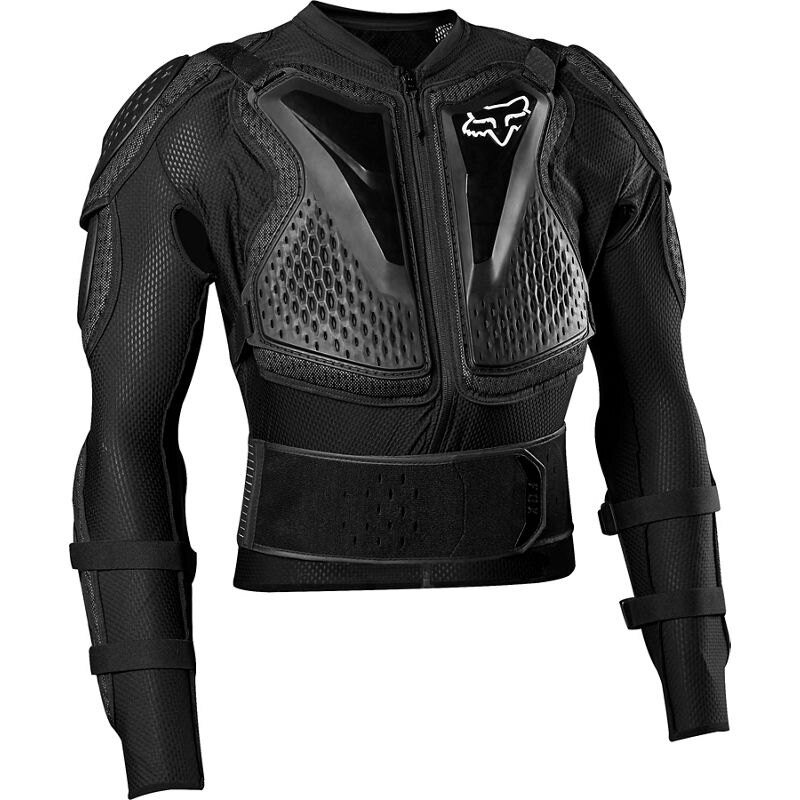
Many different brands make pressures suits, compression suits, armored shirts, all the same thing. This is a waist to wrist “shirt” that has all the upper armor built in, all goes on at once with one zip. This helps the armor stay in place unlike individual pieces. The suit typically includes elbow, shoulder, and chest plates (sometimes hard plastic, or high tech soft armor, I'll touch on that at the end.) Also, they may have a spine board (a large piece of flexible armor that goes from your tailbone up to the back or your head) and a makeshift kidney belt. So, all in one piece you've covered your upper body from a lot of different angles. If you're like me and don't bounce like you used to, these are the answer. These will vary in coverage (sometimes just the shoulders and chest) with bigger or smaller pads and vary on cost from $180 CDN up to $300+ CDN. To go with this armor means you won't need an armored jacket, so just a external shell(off-road jacket) for highway or colder days and a jersey will work for over top on the hot days in the trails.
Genouillères.
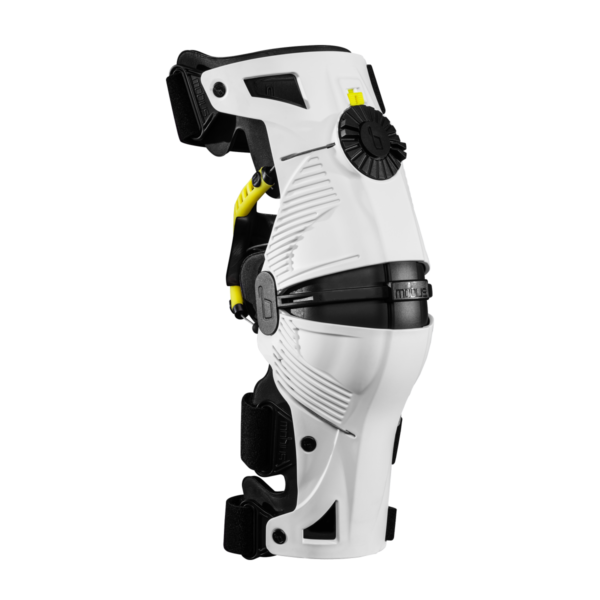
Si vous portez des bottes de motocross adaptées, les genouillères vont de pair. Les genouillères vous aideront en cas de chute et aideront à dévier tout bâton projeté par la roue avant (oui ça arrive) Une bonne genouillère rigide dotée de quelques points de pivot sera confortable à porter toute la journée, et certains proposent également une armure souple pour quelque chose de plus léger..
Colliers de cou.
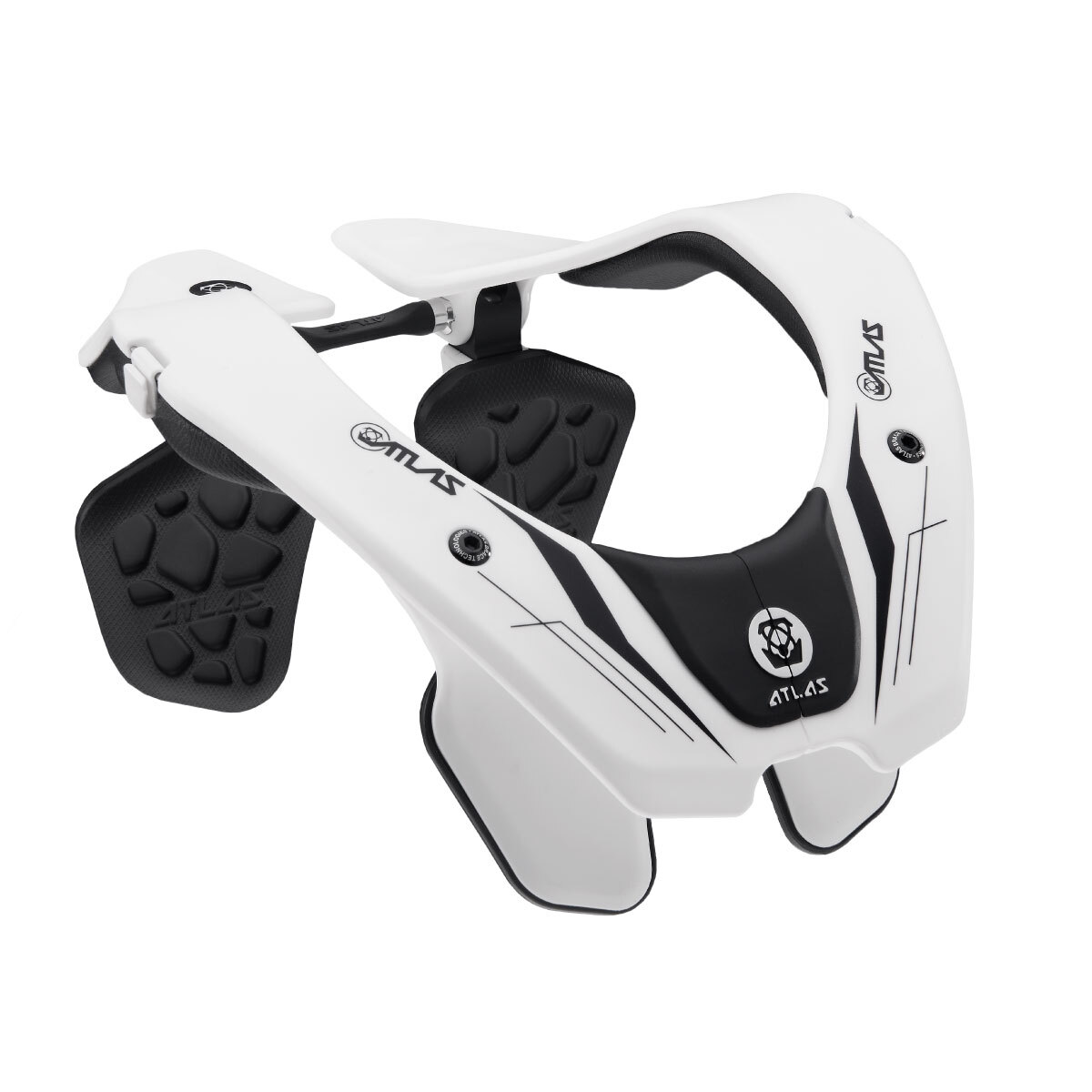
Les minerves deviennent de plus en plus courantes avec l'arrêt-Les motards de dirt bike sont de plus en plus nombreux ces jours-ci, et pour une bonne raison. Une bonne minerve aidera à éviter une extension excessive de votre cou en cas de collision à grande vitesse, pour des raisons évidentes, c'est une bonne chose. Lorsque vous regardez ces éléments, assurez-vous d'avoir également compris votre armure et votre casque, pour vous assurer qu'ils fonctionnent bien ensemble.
Ceintures rénales.
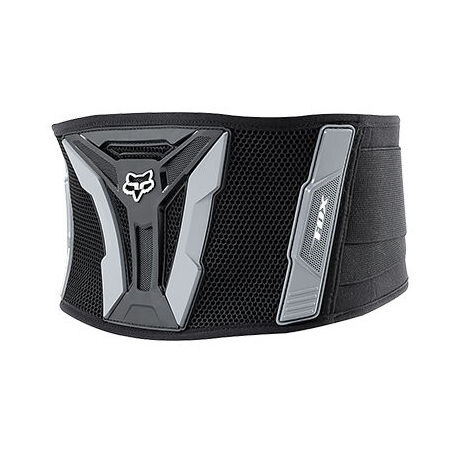
Les ceintures lombaires sont une bonne idée pour le repos-les motards d'aventure sur route aussi. Ces vélos sont lourds, et si vous partez à fond-route, tu découvriras à quel point c'est lourd à un moment donné (fait peu connu: Les motos d'aventure gagnent 50livres pour chaque fois que vous le perdez en une journée) et la ceinture rénale vous aidera à maintenir tout en place lorsque vous soulevez des objets. Ils sont assez bon marché et faciles à emballer ($35 CDN est le point de départ).
Donc à propos dearmure douce, Je vais être rapide ici car cela peut faire l'objet d'un tout autre article et celui-ci a duré un peu plus longtemps que prévu. Votre armure typique sera un plastique dur soutenu par une mousse souple pour le confort. Cette nouvelle armure souple est une mousse de haute technologie qui est douce et pliable lorsque vous la portez, mais qui durcit instantanément lorsqu'elle est impactée, répartissant l'impact sur une plus grande surface, puis redevient souple immédiatement. L'armure souple est en mousse, elle se plie et se fléchit donc assez facilement contrairement au plastique dur, ce qui lui permettra de mieux s'adapter à votre corps pour un meilleur confort. Vous avez l'impression de porter beaucoup moins d'armure que vous ne le faites en réalité.
Autre équipement à considérer:
Il existe de nombreux autres équipements que vous pouvez emporter avec vous, et la plupart d'entre eux dépendront, encore une fois, de ce que vous voulez faire. Quelques suggestions seraient un bon sac à dos d'hydratation (quelque chose qui n'est pas trop grand, qui tient bien dans ton dos), Trousse de premiers secours, lunettes de soleil polarisées (idéal pour atténuer les reflets), Localisateurs GPS SPOT ou InReach (pour désactiver-accidents de la route ou tranquillité d'esprit pour votre famille que vous avez gracieusement laissée à la maison), Autocollants de Turple Bros. Ltd. (parce qu'ils rendent les choses plus belles et plus rapides), lampe de poche, argent de poche (pour l'essence au cas où votre carte ne fonctionnerait pas) et la liste s'allonge encore et encore.
Alors voilà! Un résumé assez complet de la conduite d'aventure à moto et de ce que cela implique. Il y a tellement plus à dire si vous êtes prêt à écouter, et il y en aura plus à l'avenir, alors restez à l'écoute!
PS Merci d'avoir lu jusqu'au bout.










